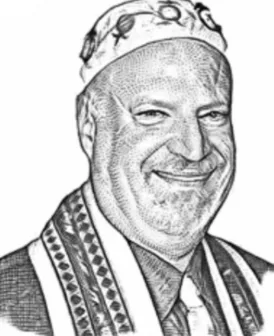While driving my 8-month-old granddaughter to nursery school, we listened to the beautiful song “This Little Light of Mine” and I enthusiastically sang along: This little light o’ mine, I’m goin’ let it shine… Ev’rywhere I go, I’m goin’ let it shine…In my neighbor’s home, I’m goin’ let it shine…Let it shine, let it shine, let it shine. My granddaughter sang along with her accompanying dolphin-like sounds, but when the song ended, she started to cry. I hit rewind, and we sang again. The crying began anew each time the song ended until we repeated the pattern and arrived at school. I thought we should all cry in the same way if we lose feeling the presence of God’s light in our homes or neighbors’ homes.
Soon after this experience, I read about a small Alaska town named Utqiagvik. Located north of the Arctic Circle, the residents of Utqiagvik now live with their polar night of no sunrises for over sixty days, which is an annual experience for them. The tilt of the Earth’s axis makes it impossible for them to see anything of the Sun’s disc visible above the horizon each winter.
At first, I thought of the 9th plague that ancient Egypt suffered: “The Lord said to Moses, ‘Stretch out your hand toward the sky, that there may be darkness over the land of Egypt, even a darkness which may be felt.’ So Moses stretched out his hand toward the sky, and there was thick darkness all over Egypt for three days.” The Egyptians could not see one another, felt stuck in the darkness, and refused to leave their dwellings. Yet, the Children of Israel were the exception with Egypt; they possessed light in their homes.
Darkness is associated within the Hebrew Scriptures as a sign of God’s abandonment. God is Divine Light, and darkness implies that God is no longer present. Being afraid of the dark is a real worry within the Bible. The 9th plague was for only three days, and I felt that the poor people of Utqiagvik had it much worse. However, I felt better as I read further within the article that during the daytime, the townspeople experience a “Civil Twilight,” akin to how the sky appears just before sunrise. So, unlike the 9th plague, there is minimal light still present.
Winter arrives, and we experience the physical absence of less sunlight. Switching to and away from Daylight Savings Time can exacerbate the experience of natural light disruption. It appears certain that we need light in our lives, and it is not a coincidence that light and fire are readily established religious traditions, especially emphasized with holidays in the winter season, a time of longer daily darkness.
Throughout the ages, people have prayerfully utilized candles and light to pursue hope and renewal. Strings of tiny lights are used in diverse religious celebrations, especially witnessed at the end of fasting during Ramadan in Islam and the Hindu celebration of their Festival of Lights, Diwali. Christmas lights are rooted in the cultural customs of hanging candles on evergreen trees and placing candles by the windows. When Thomas Edison created the first outdoor electric Christmas light displays, he fostered our cultural norm during winter to display brilliant lights everywhere that shine in dazzling colors during the season.
While Chanukah is considered a “minor festival,” its primary and meaningful symbol is the lighting of the Chanukah Menorah, which is publicly displayed in our windows. Chanukah commemorates the cleansing and rededication of the Temple in Jerusalem in 164 BCE by the Maccabees, who had led the Jews to victory over the oppressive Assyrian Greek empire. The Second Book of Maccabees explains that they “celebrated it for eight days with rejoicing in the manner of the feast of Sukkot…They decreed by edict and confirmed by a vote of the entire nation that the Jews should celebrate these days every year.”
The Chazal (Rabbinic Sages of Blessed Memory) excluded the books of the Maccabees from the canon of our Hebrew Bible because the Hasmonean priestly family that led the Maccabee struggle became corrupt once they assumed the reins of political power in 140 BCE with the re-establishment of an independent Jewish state. In place of the Book of Maccabees’ reason for the eight-day festival, Chazal taught the story of a miracle, as recorded in the Talmud:
What is the reason for Hanukkah? For our sages taught: on the 25th day of Kislev commence the days of Hanukkah…When the Greeks entered the Temple, they defiled all its oils. And when the Hasmonean dynasty prevailed against and defeated them, they made a search and found only one cruse of oil which lay with the seal of the High Priest, which contained sufficient for one day’s lighting only; yet a miracle was wrought, and they lit the lamp with it for eight days. The following year, these days were appointed as a festival with the recital of Psalms of Praise and Thanksgiving.
On the same page of the Talmud, as taught the story of the oil miracle, there is a discussion of how the nightly lighting inaugurated to celebrate the miracle should be conducted. Beit Shammai argued that all the lights should be lit on the first night and then successively reduced night by night. Beit Hillel asserted that an additional flame should be added each successive night because “we promote in matters of sanctity but do not reduce, and this is how we celebrate Hanukkah, increasing the light night by night.”
Adding God’s light to cast away the darkness more greatly is of paramount importance, and why the rabbinic rationale for promoting the miracle story is captured by the passage we read on Chanukah from the Book of Zechariah: “Not by might, nor by power, but by spirit alone.” The Maccabees may have won a military victory, but a triumph of the spirit made the rekindling of Jewish life possible.
For Jews, God’s Divine Light is our source of strength and hope in every generation, and this is the Divine Spirit that prompted the Maccabees to rise against their oppressors. Our goal with our children is to instill within them the awareness and pride in holding onto the power of the Jewish spirit and to keep God’s light ever-present.
A midrash asks and answers:
Why has light been such a favorite symbol of God? Perhaps because light itself cannot be seen. We become aware of its presence when it lets us see other things. Similarly, we cannot see God, but we become aware of God’s presence when we see the world’s Beauty and experience the Love and the Goodness of our fellow human beings.
May the lights we let shine this winter season prompt us to revitalize our Souls, serve as God’s Light, and exponentially increase Beauty, Love, and Goodness within our world. Let it Shine, Let it Shine, Let it Shine!
Shabbat Shalom..
Temple Sholom’s Senior Rabbi Mitchell M. Hurvitz is a scholar, teacher, community activist and preacher, and is recognized as one of the prominent religious leaders in the Greenwich area and beyond. A frequent guest speaker at synagogues and churches, study groups, community institutions and universities, he is a charismatic personality who engages individuals and stimulates hearts and minds. His teachings can be found in Greenwich Sentinel and in other local and national publications.


